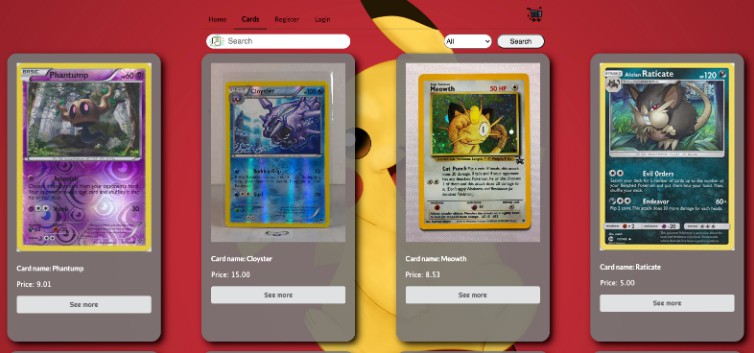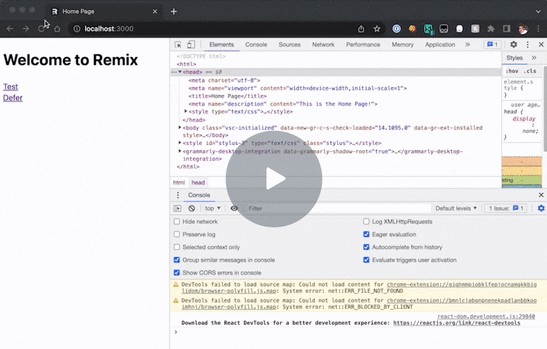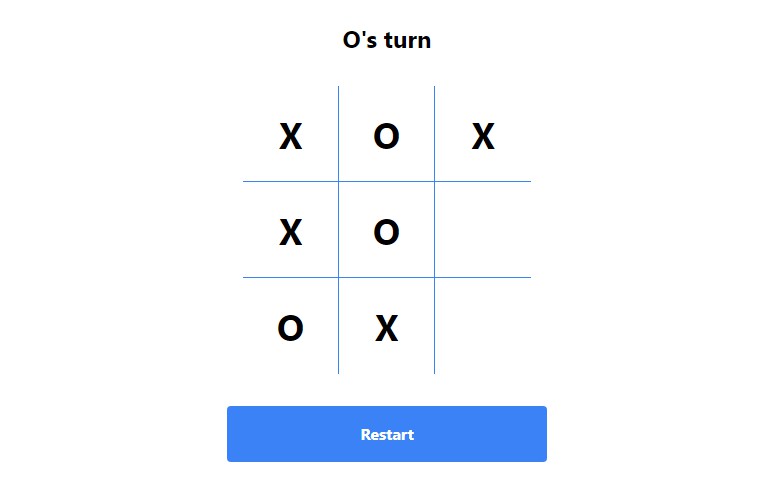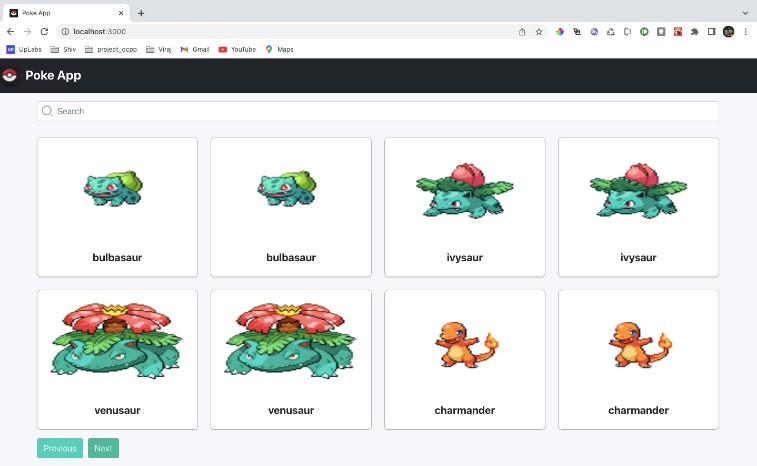Pokemon Shopper
Pokemon Shopper is a single-page e-commerce web application.
Deployed site:
Installation
Before you get started, you will have to have Postico (For Mac Users Only), Postgres, and Node installed.
Postman is not required, but it is helpful for testing API calls.
After you fork / clone this repo, you will have to install all required packages in the package.json file and make a few file changes.
npm install
.env
After you have done that, you must go into the top level of the application and create an .env file. Inside that file, create a JWT secret:
JWT_SECRET="{{secret string}}"
You cannot register a new user without the JWT secret.
Database
After you have created an .env file, you will have to initialize the database and fill it with seed data. (For Mac Users Only) Make sure you are connected to the database in Postico through the url in the db/index.js file.
Then the following script will fill the database with some dummy users and about 50 seed Pokemon cards.
npm run db:build
Server
After you have the database built, you must connect the server. The following command will initialize nodemon on the Express.JS server based on the url in the top level index.js file:
npm run server:dev
After you do that, your terminal window should display:
Server listenining on {port}
Now that your server is connected and talking to the database, let’s get the front end rendered.
Interface
The following script will begin the React rending process on the HTML and CSS for the website:
npm run start
After that you should have a fully functioning e-commerce website!
Functions
A brief rundown on things various users are able to do.
Any user can browse the products that are for sale and see more details (rarity, price, quantity available, etc.) about any of the cards.
Users can also search for their favorite Pokemon and filter the results by the condition of the card and the rarity of the card.
Registered users can add items to their cart, where they can also update the quantity they wish to buy, or remove an item from their cart entirely. Registered users can then proceed to “check out” through our Stripe interface.
Admin users can see and edit user information (for password resets, or to make another user an admin) and are capable of adding new products to the site.
Tech used
The front-end is written in React.JS and handles one-page loading and refreshing of various components.
The server and API is written in Express.JS, which handles user login with JSON web tokens, hashing of the users password with Bcrypt during registration, POS calls using Stripe, and various database calls for each product.
The database is written in Postgres / SQL.
Database schema:
Our database is built around the products table and the users table; specifically the Id’s for each.
Each product has a unique Id that attaches it to a rarity table (1 through 4), a condition table (good, mint, etc), and to the users cart if they want to purchase it.
The users table stores all the user data (username, email, address, etc) upon registering. Each user also has a unique Id that is used throughout the functionality of the website. The Id is used to connect and create a user’s cart, and when they go to checkout, takes the cart information and creates an order_cart row in the order_cart table and an order_item for each product they have purchased.
About
This project was created by Jaron Chretien, Pierce Babineaux, Justin Syrett, and Marcus Moritz in January 2023 for Fullstack Academy’s capstone project.
They are looking forward to working with you on future projects.






